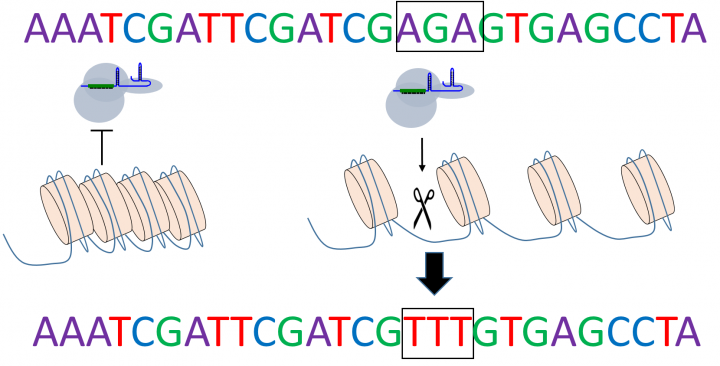Chromatin effects on CRISPR
Chromatin environment of CRISPR-Cas9 target sites affects rate of mutagenesis, but not types of mutation or frequency

CRISPR-Cas9 allows the genetic code to be re-written inside living cells. This has already transformed the way we produce genetically modified plants and livestock, and shed light on the causes of human disease. Clinical trials using CRISPR in humans are already underway and hold great promise for somatic gene therapy. More controversially, reports from China indicate that efforts to produce CRISPR-modifications in the human germline are at an advanced stage. However, experts agree that more research is needed to understand the potential for unintended consequences that might arise following use of this powerful genetic tool.
Central to the safety concerns surrounding CRISPR is the dose required to introduce a genetic modification. Too little, and the desired modification will not be achieved; too much and CRISPR could start to introduce mutations at other sites in the genome with potentially toxic side effects. Understanding what determines the optimal dose of CRISPR is therefore of paramount importance for clinical applications.
DNA inside cells is packaged together with proteins into a complex 3D structure called chromatin. Within chromatin, some regions of DNA are known to be more accessible than others. How this affects the ease with which different sites in the genome can be modified by CRISPR, and the types of modification that can be engineered, was not well understood.
In the present study, we have developed a new technique that allows us to compare how well CRISPR works within accessible versus inaccessible chromatin. Surprisingly, we found that the types of mutation which arise from imperfect DNA repair during gene editing are not affected by the chromatin environment of the target site. In contrast, we find that accessibility strongly influences the likelihood of successful editing when the dose of CRISPR is low, but not high. Because minimal exposure is desirable for therapeutic applications of CRISPR, our results suggest that the accessibility of target sites within chromatin is an important consideration when determining optimal dosing for use in humans.
Links
Original article: https://doi.org/10.1371/journal.pbio.2005595


